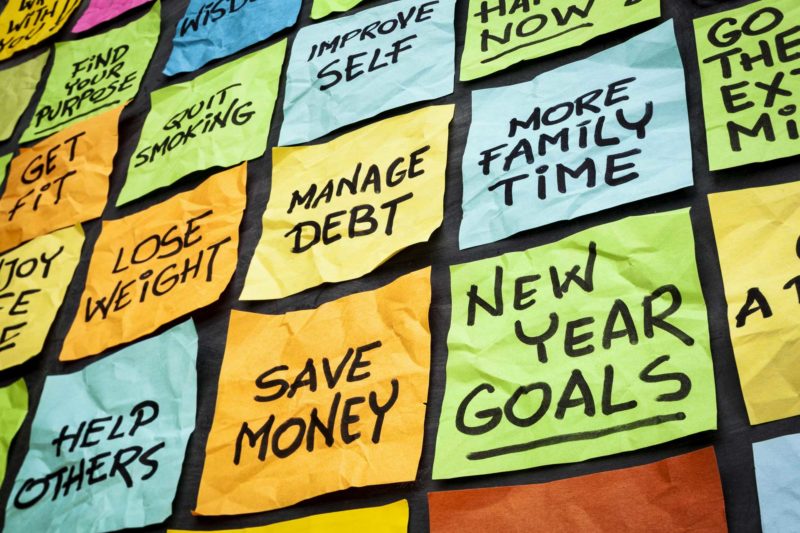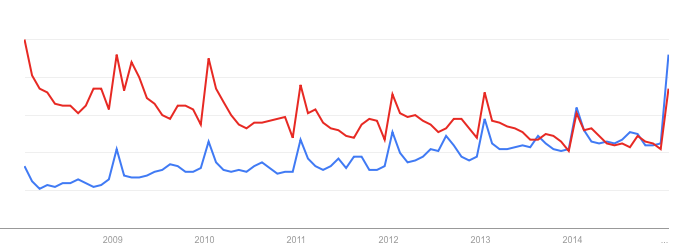Your New Year’s Resolution Strategy: Tap Into Consumers’ Desire For Improvement
Columnist Benjamin Spiegel shares advice for messaging to consumers at this time of the year.
Ah, January… that time of year when highly motivated people flood the gyms, airport smoking lounges are empty as people frantically chew nicotine gum, and plain egg white omelets and salads are everyone’s favorite meals.
These are just a few of the obvious signals that people are trying to keep up with their personal New Year’s resolutions. We just love the concept of starting over/hitting the reset button and, plainly put, bettering ourselves. It is this very human drive for self-improvement that makes this period a prime opportunity for marketers.
Aside from the overall rise in consumer interest in categories like health, fitness and education, there is an additional aspect that makes this season so appealing for advertisers: the competition (or lack of it). Compared to other holidays/seasons, the New Year has extremely low competition, and even small brands can afford to win on the big terms.
In the graph below, for example, you can see an incredibly sharp rise in consumer interest for diet-related information. There is a massive spike starting at the end of each December (on the cusp of the new year); this peaks at the beginning of January (time to fulfill on those resolutions), then slowly fades away as the year moves on, until next December when people get motivated again!
Our graph shows that this trend continues to drop through the rest of the year.
Marketers often mistake these spikes as related to the holiday shopping season, but they are not — they are related to those resolutions. You can observe similar patterns for themes like “stop smoking,” and “gym memberships.”
The beauty is that this part of human nature (to be a better person “next year”) can be leveraged and applied to almost any brand or product.
Let’s assume you are an automotive manufacturer. At first glance, there is a not a lot of linkage between automotive sales and a New Year’s resolution; however, you could frame consumer intent as, “Be a better person in 2015 and drive a hybrid.”
For a financial institution, it could be, “Be a better parent and open a college savings account.”
An organic food store could increase sales with a story about being a healthier you in the New Year.
You get the idea; there is almost always a way to make your product an appealing solution for consumers who are driven to become better people.
Amazon recently launched a new Kindle header on their home page under the marketing umbrella “New Year, New You” that exactly addresses this need for improvement (buy a Kindle, improve your reading habits).
Over the years, we have tried this approach with many different brands, and in most cases we have seen an average lift in visibility of over 25% while increasing spend by only 5%-10%. Even better, we have seen conversion rates almost double during that time.
2015: The Year of Self Improvement
According to University of Scranton psychologist John Norcross, statistics show that 64% of resolvers are still committed to their goals at the end of January — but by July, that drops to 44%. Only about 8% of the resolvers reach their goals.
Thus, actively marketing to consumers when their interests and drives are most fertile is key to earning higher engagement and sales. (You can see some interesting stats about the types of resolutions people make and how well they stick to them here.)
For your 2015 marketing goals, you should start thinking about how to frame your product or service as a betterment project. How can you position it in a way that makes the customer feel like it will make them a better person or improve their life or health? How will it create a more positive impression of the consumer among their friends and family?
Just like the Kindle example above, you need to identify consumer desires (those New Year resolutions) and tell your brand’s story around them — the “what’s in it for me” for the New Year.
Once you’ve identified how your product helps consumers achieve those resolutions, you need to create a story/campaign around it. After you have built that story, I would recommend you launch your campaign about 90 days out from January (at least) in order to create an association between your product and the improvement story. We have seen the best results when we apply sequential messaging to the campaign.
Going with the Amazon example, 90 days out we could focus the campaign around the fact that reading can help you to become smarter or more well-informed. Sixty days out, we would switch the campaign to talk about how reading more about your industry boosts your career, or how reading to your children creates a stronger parent-child bond. In the final weeks, the messaging would shift to talk about how reading should be your New Year’s resolution (because after all, don’t you want to improve your life?).
Final Thoughts
With the wealth of data available to marketers today and the ability to launch cross-platform campaigns with ease, every marketer should start thinking about their unique New Year’s resolution story.
Start telling your story a few months out by attaching specific consumer drivers to your product/service and shift the messaging over time to address the aspirations of different audiences. Get them to see how your brand can be the answer to achieving those New Year resolutions!
And why not make a campaign like this your New Year’s resolution? ;)
Opinions expressed in this article are those of the guest author and not necessarily MarTech. Staff authors are listed here.
Related stories


